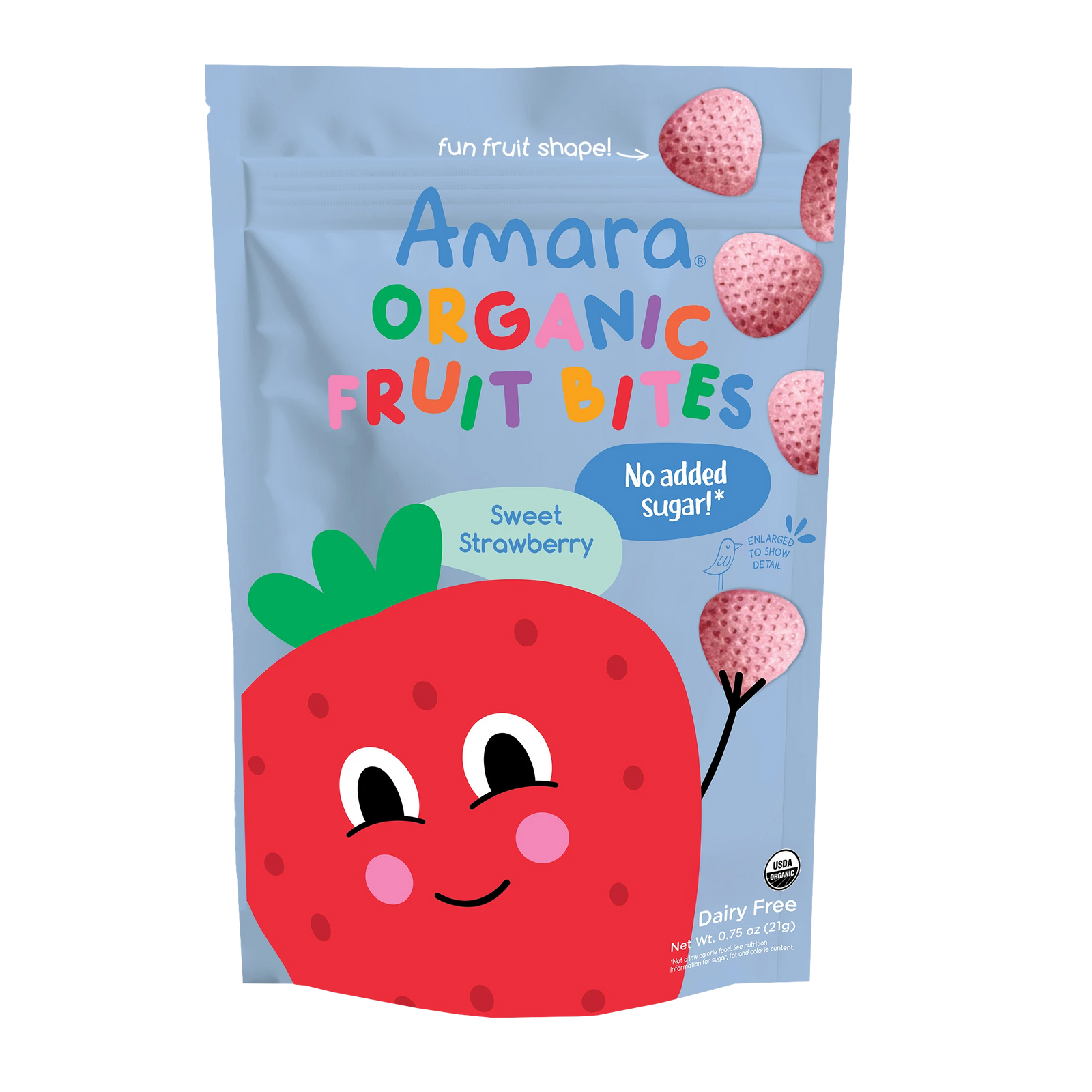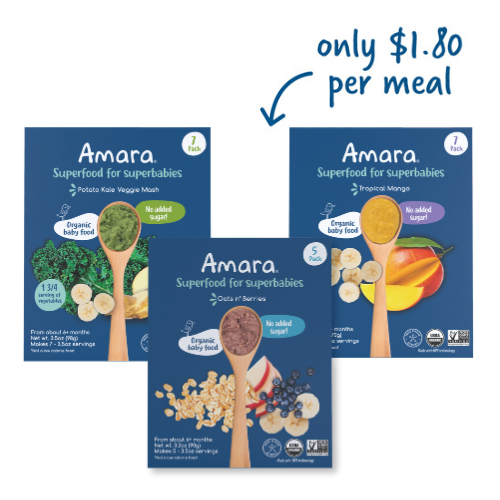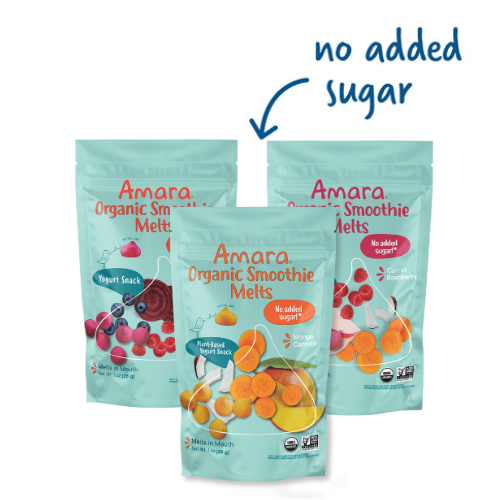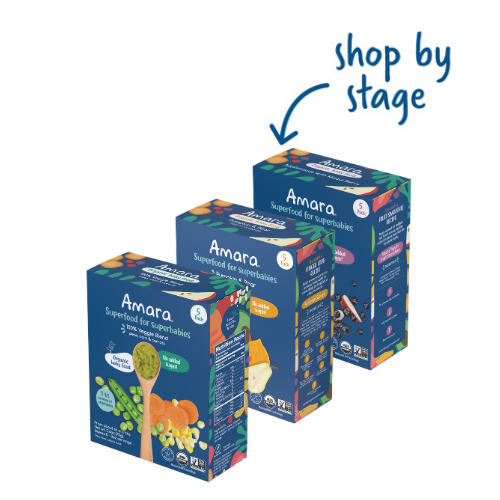
Let’s talk food additives: what they are, who regulates them, and the good and the bad they do.
First things first: what are they exactly?
Well, in the broadest sense, a food additive is any substance added to a food that affects its characteristics. They can help preserve food. They can shape the texture, taste, and look of foods. And they can make food packaging more “user-friendly,” among many other things.
Additives can be added at any stage in the food process—so, during production, processing, treatment, packaging, transportation, or the storage of food.
And for a bit of background, they aren’t unique to the 20th and 21st centuries. Our ancestors used salt to preserve meats and fish, added herbs and spices to improve the flavor of foods, preserved fruit with sugar, and pickled cucumbers in a vinegar solution.
So, today’s consumers—in demanding a food supply that is flavorful, nutritious, safe, convenient, colorful, and affordable—continue that old tradition of adding ingredients to food to enhance it.
Yet, we should understand that there has been a sharp diversion in consumption habits over the last 70 years or so. … may be we put 170 years = it start with the industrialization In these decades, people in the developed world have been increasingly consuming processed—and ultra-processed—foods. Food additives are a major part of that, so our use of them, and our inadvertent and intentional consumption of them, has skyrocketed.

Let’s dig a little deeper.
There are two kinds of additives—direct and indirect.
Direct food additives are added to a food for a specific purpose in that food. For example, xanthan gum—used in salad dressings, chocolate milk, bakery fillings, puddings, and other foods to add texture—is a direct additive. Most direct additives are listed as an ingredient on a food label.
Indirect additives, in trace amounts, become part of a food during its packaging, storage, or other handling. So, these are harder for consumers to track.
Another distinction when we think about food ingredients: there are “natural ones” and “artificial ones.”
The difference is just that artificial ingredients are synthetically (man-made) made, whereas natural ones are derived from natural sources. For example, from soybeans and corn, we can get lecithin which helps to maintain product consistency. Or—consider beet powder. Totally natural, it can be used for food coloring. (To make things a bit more complicated: some ingredients found in nature can also be manufactured artificially and produced more economically, with greater purity and more consistent quality, than their natural counterparts. For example, vitamin C or ascorbic acid may be derived from an orange OR produced in a laboratory.)

Who regulates additives?
In the U.S., the Food and Drug Administration (FDA) regulates both direct and indirect food additives—its goal being to ensure that foods are safe to eat and are accurately labeled.
All of this started with the 1938 Federal Food Drug and Cosmetic Act, followed by the 1958 Food Additives Amendment (and other subsequent regulations).
To market a new additive (or one that’s been approved for one use but not another use yet), the FDA requires that a manufacturer or sponsor provide evidence that the substance is safe for the ways in which it will be used.
The FDA considers: 1) the composition and properties of the substance, 2) the amount that would typically be consumed, 3) immediate and long-term health effects, and 4) various safety factors. All of this helps the FDA determine an appropriate level of use for that additive with a built-in safety margin (so that the level of approved use is actually, in the FDA’s opinion, much lower than what would be expected to have any adverse effect.)
But this isn’t perfect science. The FDA writes:
“Because of inherent limitations of science, FDA can never be absolutely certain of the absence of any risk from the use of any substance. Therefore, FDA must determine - based on the best science available - if there is a reasonable certainty of no harm to consumers when an additive is used as proposed.”
If an additive is approved, the FDA issues regulations including which foods it can be used in, the maximum amounts to be used, and how it should be identified on food labels. (And if new evidence suggests that a product already in use may be unsafe, or if consumption levels need another look, the FDA can prohibit its use and/or conduct further studies to determine if the use can still be considered safe.)
Additionally, since 1999, the FDA also consults with the U.S. Department of Agriculture during the review process for ingredients that are proposed for meat and poultry products.
Now, more than 10,000 chemicals are allowed to be added to food in the U.S., either directly or indirectly, under these laws.
Of these, an estimated 1,000 are used under a “Generally Recognized as Safe” (GRAS) designation, which doesn’t require FDA approval or notification.

What about food colors?
Yep, those are additives as well.
What are they exactly?
A color additive is any dye, pigment, or substance that imparts colors when it’s added or applied to a food, drug, cosmetic, or to the human body. It can do this on its own or through reactions with other substances.
Color additives are used in foods to:
to offset color loss due to exposure to light, air, temperature extremes, moisture, and storage conditions to “correct” or enhance natural variations in color—so that all goods look the same to the consumer to provide color to colorless foods
Because let’s face it: we want our (processed) foods to “look” a certain way. Without color additives, soft drinks wouldn't be brown; margarine wouldn't be yellow; and mint ice cream wouldn't be green.
In 2005, Procter and Gamble—the global consumer goods giant—coined “the first moment of truth” to describe when we, as consumers, pick one product over another. In this “first moment,” color is responsible for 62–90% of the customer’s assessment. Wow! That’s a major incentive, then, for a lot of research and development into food colorants. Some market research companies have predicted the global food colors market will be $2.97 billion by 2025. (In 2016, it was $1.79 billion.)
The FDA categorizes color additives in two ways:
1. Certified colors are synthetically produced and used widely because they give off an intense and uniform color, are less expensive, and blend easily to create a variety of hues.
2. The other category is colors exempt from certification. These include pigments derived from natural sources—or, if man-made, they’re considered “nature-identical.” They are typically more expensive than certified colors and may add unintended flavors to foods. Examples of exempt colors include annatto extract (yellow), dehydrated beets (bluish-red to brown), caramel (yellow to tan), beta-carotene (yellow to orange) and grape skin extract (red, green).
And while the categorization scheme—where certified=artificial and exempt=natural—seems pretty clear cut, the FDA doesn’t provide a specific definition for “natural color” vs. “artificial color.” Only natural flavorings, another class of food additives, have a specific definition given by the FDA. To this point, consider the food colorant, copper chlorophyllin. It’s extracted from a natural source (often from edible green leaves), but its manufacture requires additional chemical batch processing. So, the question is: is it a natural or a synthetic colorant? (Both…?)

Since the FDA regulates food additives, can we assume that they’re pretty safe?
Some additives are safe—and sometimes very helpful for human health. Let’s consider how we add vitamins and minerals to fortified cereals.
In the 1930s, deficiencies in numerous B vitamins, such as thiamin and niacin, as well as vitamin D were so common in the U.S. that cereal companies like Kellogg’s began to add these vitamins. They also did the same for folic acid deficiency. And it’s definitely helped.
*Interesting side point about when cereal makers add in nutrients, they bake in heat stable ones (such as vitamins A and E), whereas they apply non-heat-stable nutrients (such as B-vitamins) to the cereal after heating is completed. Since each cereal is unique in how many nutrients it can handle, fortification levels vary across cereals.
But back to the question: are all additives safe? Let’s remember the FDA’s own caveat: “Because of inherent limitations of science, FDA can never be absolutely certain of the absence of any risk from the use of any substance…”
So, when we’re asking ourselves—"are all additives safe for human consumption?”—the short answer is no.
Not all additives appear to be safe, and others... well, we need more information. There are substantial gaps in data about potential health effects of food additives.
From human and animal epidemiological studies over the past few decades, there has been increasing scientific evidence suggesting some synthetical chemicals used as indirect and direct food additives could have potentially adverse health effects, contributing to disease and disability.
As the American Academy of Pediatrics has said, children may be particularly susceptible to the effects of these compounds because they have higher relative exposures compared to adults. They’re smaller than us, so they have greater dietary intake per pound. On top of that, their metabolic (ie, detoxification) systems are still developing, and key organ systems are undergoing substantial changes that are vulnerable to disruptions.
And beyond that, there are so many additives, and we’re missing comprehensive and long-term studies—not only on each one but also the cumulative effects of consuming multiple additives, especially over long periods.
For instance, the FDA maintains a food additive list and of the 3,941 additives listed, reproductive toxicology data was only available for 263 (6.7%), and developmental toxicology data was only available for 2 additives.
Beyond this, scientific critics argue that the FDA’s “Generally Recognized As Safe” (GRAS) designation has been too liberally applied, putting possibly dangerous substances into the food supply.
Take butylated hydroxyanisole (BHA) for instance. Found in prepared foods (cereals, fast food, drink mixes, snack foods), food packaging, and plastic, it’s a synthetic antioxidant used to prevent fats in foods from going rancid and as a defoaming agent for yeast. We’ve been using it since the 1940s. The FDA classifies it as GRAS, but some laboratory studies have shown BHA to be carcinogenic in rats and other animals. The National Institute of Health’s National Toxicology Program even concluded that BHA can be “reasonably anticipated to be a human carcinogen.” Contrary to that, though, is the claim that since BHA is an antioxidant, its tumor promoting properties might be offset by its antioxidizing powers (which are known to fight free radicals). So … which is it?
To me, it seems better to air on the side of caution … which brings us to a few more examples of problematic additives.
Perchlorates
Perchlorate is an indirect food additive that enters our food supply a few ways. One, as a contaminant in water or as a component of nitrate fertilizers. As the FDA has discussed in its own studies, exposed crops may retain elevated levels of the compound. Two, perchlorate is also used as an antistatic agent for plastic packaging. And three, perchlorate can contaminate food when food manufacturers use hypochlorite bleach to clean.
What’s the big deal with perchlorate? Well, it’s known to disrupt thyroid hormone production, and the thyroid hormone is critical for early life brain development, among other processes. Alterations to normal hormone concentrations can have lifelong cognitive consequences.
So, when we think about infants, toddlers, and children, this is an issue.
With infants in particular, some powdered formula also has perchlorate in its packaging materials.
Pregnant women’s exposure to perchlorate raises further concern. Since perchlorate can disrupt adult thyroid functioning, this could contribute to maternal hypothyroidism (where the mom’s iodine level decreases and the thyroid gland can't produce thyroid hormone; women who are iodine deficient are especially at risk for this). The developing fetus will be impacted by maternal hypothyroidism since the baby is reliant on its mom’s thyroid hormone during the first trimester. The effect? Scientists suggest that maternal hypothyroidism during pregnancy is associated with cognitive deficiencies in children. They also speculate that perchlorate (and other food additives that mess with the thyroid) may be contributing to the increase in neonatal hypothyroidism and other thyroid system issues that have been increasingly documented in the U.S.

Artificial food colors (AFCs)
From 1950 to 2012, our use of AFCs increased more than fivefold, from 12 to 68 mg per capita per day. And while the FDA has approved 9 AFCs for use (Blue 1, Blue 2, Green 3, Yellow 5, Yellow 6, Red 3, Red 40, Citrus Red 2, and Orange B), studies over the last few decades have raised concerns regarding the effect of AFCs on child behavior—particularly their role in exacerbating attention deficit/hyperactivity disorder symptoms. (There is evidence, for instance, that at least one AFC, Blue 1, may be able to cross the blood-brain barrier—meaning, it can impact the brain’s functioning.)
The FDA has set acceptable daily intakes for each of the AFCs. However, these standards, as well as original safety approval for the color additives, are based on animal studies that did not include neurologic or neurobehavioral observations.
Given that such effects have been observed in children, many scientists argue that a thorough reassessment of AFCs is warranted to determine whether they meet the FDA‘s benchmark of safety: “convincing evidence that establishes with reasonable certainty that no harm will result from the intended use of the color additive.”
On top of all this, AFCs, like other food additives (including sweeteners, preservatives, emulsifiers), can also mess with our guts, inducing an imbalance in the bacterial composition there. This can contribute to the onset of Irritable Bowel Disease which is on the rise in western countries. (Emulsifiers, by the way, are added to processed foods to enhance texture and extend shelf-life.)
Consider food colorant titanium dioxide (TiO2), also known as E171, frequently found in sauces, cheeses, skimmed milk, ice-cream, coating for sweets, and chewing gum. In May 2021, the European Food Safety Authority (“the EU’s FDA”) concluded that E171 can no longer be considered safe when used as a food additive because increased consumption can negatively impact the human microbiome—aka, our guts.

Nitrates and nitrites
Nitrates and nitrites are commonly used as preservatives in cured and processed meats, fish, and cheese. But there has been increasing concern regarding their use.
In 2004, the American Medical Association stated that nitrates and nitrites can particularly impact infants because of the chemical compositions of their gastric tracts, making them vulnerable to methemoglobinemia (a rare blood disorder that affects how red blood cells deliver oxygen throughout your body).
The American Medical Association also highlighted the risk of gastrointestinal or neural cancer from the ingestion of nitrates and nitrites, which (although not carcinogenic themselves) may react with secondary amines or amides to form carcinogenic “N-nitroso” compounds in the body.
To this point, in 2006 the International Agency for Research on Cancer classified ingested nitrates and nitrites, in situations that would lead to the production of those carcinogenic N-nitroso compounds, as “probable human carcinogens.”
And in 2015, the same agency specifically classified processed meat (which includes meat that has been salted, cured, or otherwise altered to improve flavor and preservation—so, probably containing nitrates and nitrites) as “carcinogenic to humans.” (Relatedly, there is convincing evidence linking consumption of processed meats with colorectal cancer.)
High maternal intake of nitrite-cured meats has also been linked to an increased risk of childhood brain tumors in the offspring.
So, what does the FDA think of all this? Current regulations allow up to 500 parts per million of sodium nitrate and 200 parts per million of sodium nitrite in final meat products. However, the FDA does not permit nitrates or nitrites to be used in food produced specifically for infants or young children. On top of potential carcinogenic effects, nitrates, like perchlorates, can also disrupt the thyroid from functioning.
What’s not helpful? In recent years, food manufacturers have been using alternative sources of nitrate and nitrite preservatives, such as celery powder, in products labeled as “natural” and “organic.” These products may contain nitrates and nitrites in concentrations that can be equivalent to or higher than those found in traditional products using sodium-based sources. So, consumers should be aware that with respect to nitrates and nitrites, natural and organic products may not provide advantages over conventional products.
There are many other food additives with potentially adverse effects. Here are a few more examples:
Bisphenols like BPA - Found in the lining of metal cans, plastics, and cardboard containers (now banned in plastic baby bottles and sippy cups). BPA can disrupt puberty, decrease fertility, increase body fat, and impact the nervous and immune systems. Check out our post on BPA here.
Phthalates - Makes plastic products flexible. Gets into dairy, meat, seafood, fruits, veggies, and fast foods during food processing/packaging. These may affect male genital development, increase childhood obesity by disrupting metabolic functioning, and impact cardiovascular systems.
Per- / polyfluoroalkyl chemicals (PFCs) - Used in nonstick cookware coatings and for grease- and moisture-resistant paper and cardboard packaging. These can reduce immunity, birth weight and fertility and may also impact the thyroid.
And don’t forget about added sugars, added salt, and artificial sweeteners. Check out our post on artificial sweeteners here.
I don’t know about you but all of this... is very overwhelming to me!

So, what are some practical things you can do for your family to limit your exposure?
- Buy fresh food—ideally organic and local—with minimal packaging.
- Buy packaged food with additive-free labels, like Amara’s baby food blends + smoothie melts.
- If you’re choosing a processed food, search for products with short, clear, and understandable ingredients.
- Make dishes from scratch.
- Make simple switches (i.e., fresh herbs/spices instead of processed marinades/sauces). For beverages, choose fresh herbal teas, fresh fruit or vegetable juices, or old-fashioned (filtered) tap water.
- Prefer real meat, poultry or fish than processed products (like sausages, hotdogs, meat products, prepared meat or fish dishes/ready to serve…).
- Wash plastic food containers/utensils by hand instead of in the dishwasher.
- Avoid putting your plastics into the microwave. (Heat causes them to release additives.)
- Use glass and stainless-steel containers to cook and serve food.
- Be careful with older plastic containers (like baby bottles and cups) that might not be BPA-free.
- Be a smart shopper. Reduce your use of plastics #3, 6, and 7 unless labeled "biobased" or "greenware.” Look for “BPA free” on plastics and metal cans.
Any tips to share? #amarafood #additivefree
Article researched by:
Amara's Chief Nutritionist: Sonia A. Schiess, PhD in Nutrition, specialized in the introduction of solids and liquids to infants. Sonia's passion started when she was studying nutrition and dietetics in university, completing a post degree in Human Nutrition. Later on, she completed her PhD as a nutritionist, with a focus on introducing food in the first year of a baby's life. Her wide experience gives her a unique perspective, drawing from her time in clinics, hospitals, independent consulting and university research. She's authored several papers including "Introduction of complementary feeding"; "Introduction of potentially allergenic foods in the infant's diet during the first year of life" and "Intake of energy providing liquids during the first year of life" in five European countries. The combination of Sonia's science and our chef's magic ensures every Amara product is not only optimized for your baby's health but is delicious as well.
References:
https://www.fda.gov/food/food-ingredients-packaging/overview-food-ingredients-additives-colors
"BHA and BHT: A Case for Fresh?” Scientific American, December 19, 2013.
Raoul P et al., Food Additives, a Key Environmental Factor in the Development of IBD through Gut Dysbiosis. Microorganisms 2022.
Rinninella E et al., Food Additives, Gut Microbiota, and Irritable Bowel Syndrome: A Hidden Track. Int. J. Environ. Res. Public Health 2020.
Trasande Let al., Food Additives and Child Health. Pediatrics 2018.
Viera I et al., Green Natural Colorants. Molecules 2019.







Leave A Comment